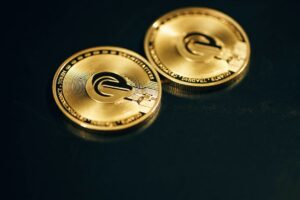The History of Forex Market: From Bartering to Electronic Trading
The foreign exchange market, also known as forex, is the largest and most liquid financial market in the world. It facilitates the exchange of currencies between individuals, businesses, and countries. Tracing its roots back to ancient times, the forex market has evolved significantly over the years, transitioning from bartering to electronic trading. In this article, we will delve into the fascinating history of the forex market and explore its transformation over time.
Bartering: The Early Form of Forex Trading
The concept of forex trading can be traced back to the ancient times when people used to engage in bartering. Bartering involved the exchange of goods and services between individuals or communities, using a system of direct trade. This early form of trading laid the foundation for the development of the forex market, as it involved the exchange of different currencies based on their relative values.
Metal Coins: The Emergence of Currency
As civilizations advanced, the need for a standardized form of exchange became evident. This led to the introduction of metal coins, which were used as a medium of exchange. These coins had a fixed weight and purity, which facilitated trade across different regions. The value of these coins was determined by the metal content, making them an early form of currency.
Paper Money: The Birth of Fiat Currency
The use of metal coins as currency continued for centuries until the introduction of paper money. Paper money was first introduced in China during the Tang Dynasty in the 7th century. It was initially used as a representation of the value of metal coins held in government treasuries. Over time, paper money became widely accepted, and its value was backed by the issuing government or central authority. This marked the birth of fiat currency, where the value of money is not tied to a physical commodity but is based on the trust and confidence in the issuing authority.
The Gold Standard: A Global Monetary System
With the rise of international trade and economic globalization, the need for a standardized exchange rate system became essential. The gold standard emerged as a global monetary system in the late 19th century. Under the gold standard, currencies were pegged to a fixed amount of gold, ensuring stability in exchange rates. This system facilitated international trade by providing a reliable means of exchange and preserving the value of currencies.
The Bretton Woods System: The Rise of the US Dollar
The gold standard faced challenges during the Great Depression and World War II. In 1944, delegates from 44 countries gathered in Bretton Woods, New Hampshire, to establish a new global monetary system. The outcome was the creation of the International Monetary Fund (IMF) and the International Bank for Reconstruction and Development (IBRD). The Bretton Woods system pegged currencies to the US dollar, which was in turn pegged to gold. This system provided stability and facilitated international trade for nearly three decades.
The Era of Floating Exchange Rates
The Bretton Woods system collapsed in 1971 when the United States abandoned the gold standard. This led to the era of floating exchange rates, where the value of currencies fluctuated based on supply and demand in the forex market. The advent of electronic trading platforms in the 1990s further revolutionized the forex market, making it accessible to individual traders and retail investors.
Electronic Trading: The Modern Forex Market
The development of the internet and technological advancements paved the way for the modern forex market. Electronic trading platforms, such as MetaTrader and cTrader, emerged, enabling traders to buy and sell currencies with the click of a button. These platforms provide real-time quotes, charts, and analysis tools, empowering traders to make informed decisions. The forex market operates 24 hours a day, five days a week, allowing traders to participate in the market at their convenience.
Conclusion
The history of the forex market is a testament to the evolution of human civilization and the need for efficient means of exchange. From the early days of bartering to the modern era of electronic trading, the forex market has undergone significant transformations. Today, it serves as a global marketplace where trillions of dollars are exchanged daily. As technology continues to advance, the forex market is likely to evolve further, providing new opportunities for traders and investors alike.






